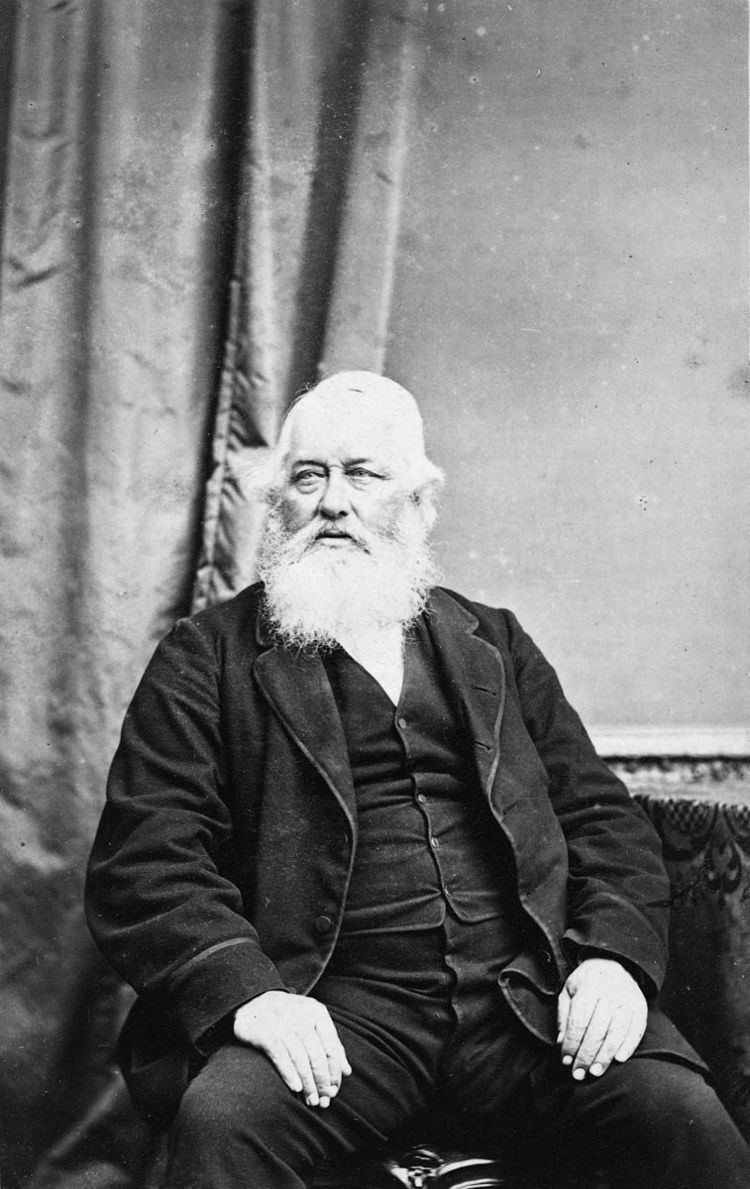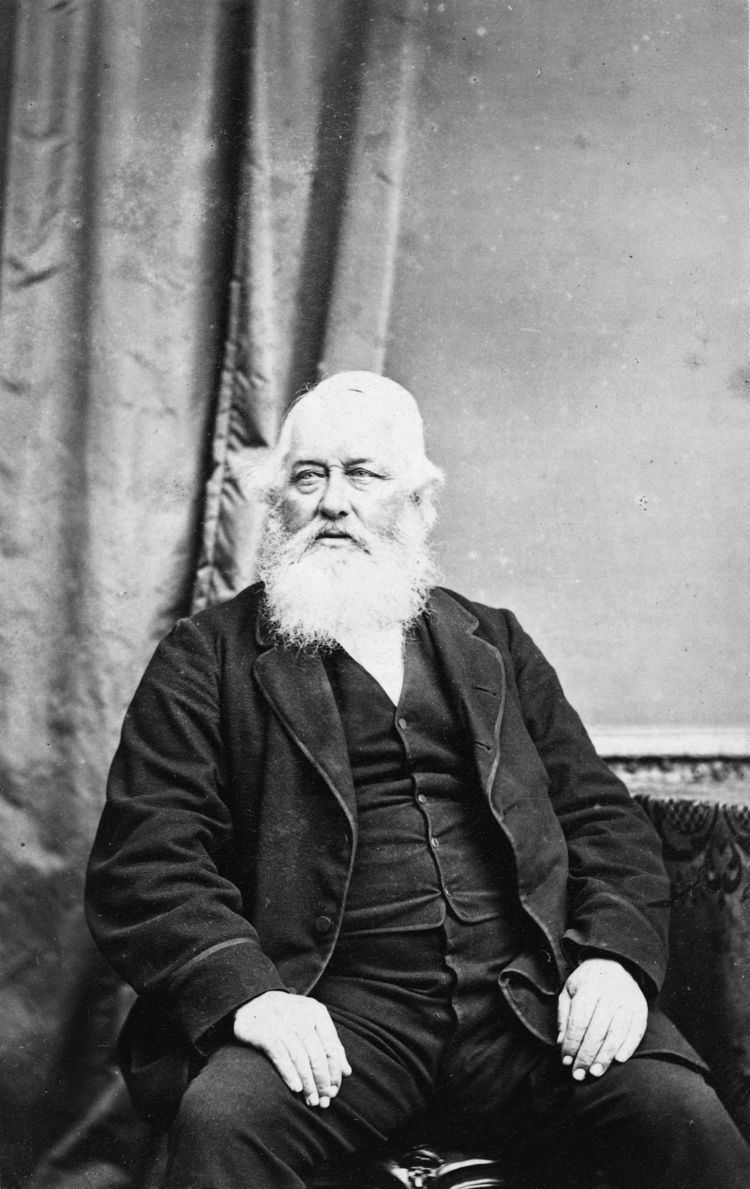Role Politician | Preceded by new constituency Name John Wilson Succeeded by James FitzGerald Resigned 1866 | |
 | ||
Died March 2, 1881, Cashmere, New Zealand | ||
Education Brasenose College, Oxford | ||
Sir John Cracroft Wilson (21 May 1808 – 2 March 1881), also known as Nabob Wilson, was a British-educated civil servant in India, farmer and politician in New Zealand.
Contents

Early life
John Cracroft Wilson was born in Onamore, India, the son of Alexander Wilson , a judge in the Madras Civil Service and a noted botanist, and Elizabeth Clementina Wilson (née Cracroft). His mother was from a long established family—the Cracrofts of Hackthorn Hall in Lincolnshire. Her family name was given to him as a second Christian name, a custom that has been followed by the family ever since; they are thus known as the Cracroft Wilsons.
He was educated at Haileybury College and Brasenose College, Oxford. He returned to India in 1828 and entered the Bengal Civil Service as a cadet, advancing to become a magistrate.
He married Elizabeth (née Wall), probably on 4 November 1828 at Westminster, or Brixton, Surrey. His wife died in 1843 in Moradabad after giving birth to their eighth child. He was married again, on 12 October 1844, to Jane Torie Greig in Bareilly near Moradabad. There were no children from this second marriage.
Australia and New Zealand
In 1853 his health broke down and he was ordered to convalesce in a cooler climate. He wanted to find a country suitable for the retirement of employees of the East India Company. Accordingly, he sailed to Australia on the Queen with his wife, daughter Emma, many servants, stock and exotic livestock. He did not like Australia, but met Alfred Cox, who was buying sheep for his next venture in the Canterbury region of New Zealand. Wilson decided to also go to Canterbury, and, after purchasing sheep and cattle in Sydney, took them to Lyttelton in the Akbar. After a disastrous journey where much of his stock died and 1,200 sheep had to be jettisoned, he arrived on 8 April 1854. His stock was transferred to the nearby Gollans Bay (the bay in Lyttelton Harbour beneath Evans Pass), where he lost more stock to tutu poisoning and southerlies. His party made its way over the Port Hills via the Bridle Path. He took up 108 hectares (1.08 km2) of land on the other side of the Port Hills and named the farm Cashmere (now a suburb of Christchurch) after Kashmir in India. He leased three more runs further away from Christchurch which he named Broadlands, High Peaks, and Cracroft. The run at Cracroft, near Hinds, was at 20,392 hectares (203.92 km2) the second largest in Canterbury. At his Cashmere station, he built a house with 11 rooms and several farm buildings. Wilson left Lyttelton on 19 December 1844 on the Waterwitch for India, and the following year, his eldest son arrived to take over the management of the properties. His wife and daughter would follow him some time later, and they would not arrive in Moradabad before 1857. His daughter met Logan Campbell on the journey, whom she married in 1858.
Service in India
Wilson arrived in India in May 1855. During the Indian Rebellion of 1857, he secured special powers from the Lieutenant-Governor and acted to prevent the spread of disaffection. His intervention was so effective that, after the Mutiny, Lord Canning, the Viceroy, recommended him for a distinction
because he has the enviable distinction of having, by his obstinate courage and perseverance, saved more Christian lives than any man in India … at the repeatedly imminent peril of his own life.
In May 1860, Queen Victoria awarded him the Companion of the Order of the Bath (CB) and, in 1872 Cracroft Wilson was offered, and accepted, the rank of Knight Commander (KCSI) of the Order of the Star of India.
Later life in New Zealand
After he returned to New Zealand in 1859 Cracroft Wilson was elected to the House of Representatives for the electorates of City of Christchurch (1861–1866), Coleridge (1866–1870), and Heathcote (1872–1875).
At the end of the 1866–1870 term, Cracroft Wilson retired from the Coleridge electorate due to an 'unfortunate accident' that he had suffered. On 30 July 1872, he was elected unopposed in a by-election to represent Heathcote following the resignation by John Hall, who had accepted a position in the Legislative Council. In the 1875–76 general election, held on 4 January 1876 in the Heathcote electorate, Cracroft Wilson was defeated by James Temple Fisher.
He was for some years Chairman of the Public Petitions Committee. He was a forceful and, at times, provocative debater. During the 1860s, when Māori affairs were frequently before the House, Cracroft Wilson drew freely on his Indian experiences to reinforce his arguments. He strongly urged the use of Gurkha troops as the most effective means of bringing the war to a speedy and successful conclusion.
He represented Ashburton on the Canterbury Provincial Council from May 1862 to May 1866 and Heathcote from March to July 1871, and again from April 1874 to abolition of the Provinces in October 1876. He was on the Canterbury Executive Council from 15 April 1875 until its abolition, and during its last session (April to June 1875), he was its president. In addition he served on numerous local bodies and was a keen member of the Canterbury Acclimatisation Society. He was an early member of the Canterbury Jockey Club and helped Cass to select the site of the racecourse. He commanded the Canterbury Yeomanry Cavalry, was a patron of opera and drama, a governor of Canterbury College, and a diocesan synodsman. As a farmer, he imported pedigree sheep, principally Lincolns, and founded a stud flock.
Cracroft Wilson died at Cashmere, Christchurch, on 2 March 1881. He was survived by his wife and four of his children (Frederick, Alexander, Emma and Constance).
During World War II, the military commandeered the Cracroft Wilson estate, founded by Cracroft Wilson in 1854, for their Southern Group headquarters, and secret work on the Cracroft Caverns underneath the house began in 1942.
